When your stage lighting falls short, audiences feel distant from the performance. You want them fully immersed, but unclear lighting can break the mood.
You should match your lighting to your event, venue size, and budget. This gives a balanced look that supports performers and keeps viewers engaged.
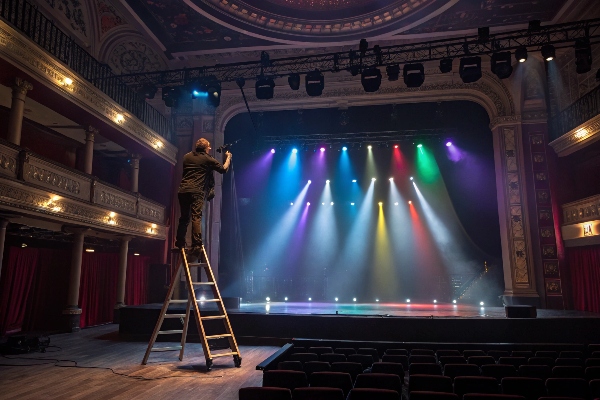
Good lighting depends on clarity and design. You need to plan your equipment and effects with care. Keep reading to see how to match your lighting to every venue and performance.
Why Is Stage Lighting So Important?
Many shows have great scripts or music, yet they fail without proper lighting. Bright spots and shadows shape how the audience sees each moment.
Stage lighting does more than brighten a scene. It creates mood, focuses attention, and brings life to every performance1.
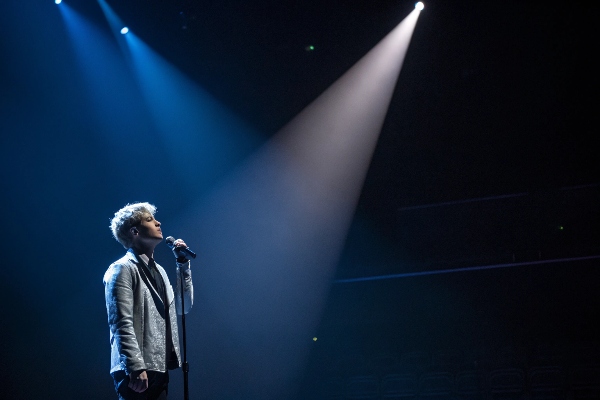
Stage lighting shapes how audiences connect with a show, directing focus and setting the tone. It highlights performers, adds depth with angles and colors, and enhances storytelling or music. Proper lighting ensures facial expressions and details are visible, energizes concerts, and suggests time or mood. Performers feel confident with clear visibility, and speakers stay the center of attention in business events. Bright fixtures help in large venues, while softer lights suit intimate spaces. Thoughtful design blends or separates scenes, builds excitement, and marks transitions. Beyond illumination, stage lighting creates mood, guides focus, and completes the performance experience.
Which Event Types Require Different Lighting?
Confusion arises when you use the same lighting for a dance recital and a business conference. Each event has unique goals.
Plays need clear face lighting. Dance needs dynamic color. Concerts want power and flash. Conferences need soft and balanced light2.

Different performances require tailored lighting. Theater focuses on precise face illumination, subtle transitions, and emotional tone shifts to highlight actors’ expressions. Dance shows need vibrant color washes, moving heads to track performers, and LED wash lights to emphasize movement and group patterns. Concerts demand bright fixtures, beam lights, lasers, and strobing effects for dramatic visuals synced with music. Corporate events prioritize even lighting, warm or neutral tones, and comfort for speakers and displays, often using Fresnel or LED PAR lights. Versatile setups handle mixed events like product launches. Careful planning ensures lighting matches the event’s key aspects and purpose.
How to Assess Venue Size and Layout?
If you ignore your venue’s shape and capacity, your lights might be too dim or too bright. Viewers might miss key moments.
Look at seating, stage dimensions, and hanging points. Then choose power and angles that fit the space.
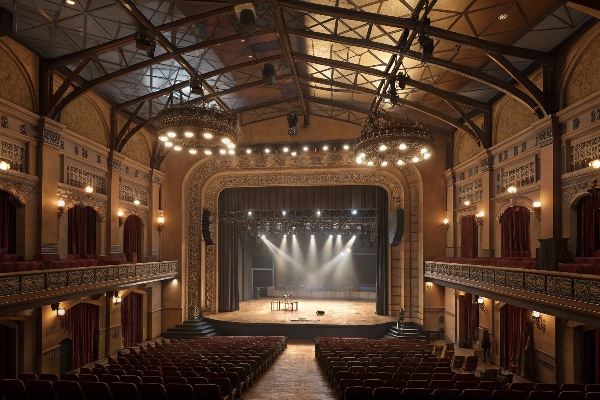
Venue details greatly influence lighting plans. Large arenas need high-powered fixtures to cover wide areas, multiple trusses, and catwalk access for rigging. Lights must have sufficient output and beam angles to reach the stage. Small venues, like black box theaters, benefit from compact fixtures like LED PARs or Fresnels to avoid overwhelming the space. Obstructions like columns or low ceilings require careful light positioning, such as side booms or perimeter setups. Ensure power supply can handle your rig; efficient LEDs minimize overload risks3. Avoid blocking views or casting shadows by using mockups or 3D visualizations for fixture placement.
Which Lighting Effects Fit Your Goals?
Without clear targets, you might scatter random colors or patterns. This can look messy and distract the audience.
You can select wide washes4 for big color and tight spots5 for focus. Gobos add patterns, and dynamic strobes amplify energy.

Decide the mood you want to convey. Warm settings use amber filters or warm tones, while bold color transitions suit exciting events like rock concerts. Wash fixtures provide uniform color for large areas, ideal for ensemble scenes, while spot fixtures highlight soloists or key objects. Gobos add texture, projecting patterns like forests or cityscapes, often used in dramas. Beam fixtures create dramatic effects in musicals, especially with hazers. Strobe effects work for epic reveals but should be used sparingly. Transitions, like crossfades or sudden color changes, convey emotional shifts or urgency. For corporate talks, clean washes and focused spots with subtle color shifts keep the stage professional yet engaging.
What Fixtures Should You Consider?
The market is full of fixtures. You might see Fresnel, PAR, Ellipsoidal, and Moving Heads. This can be confusing.
Each fixture has a purpose. Fresnel is soft, PAR is strong, Ellipsoidal is precise, and Moving Heads are versatile.
Different lights serve specific purposes. Ellipsoidal spotlights (Leko/ERS) offer sharp focus and can project gobos or shapes, ideal for theater. Fresnel lights provide soft, adjustable beams for general illumination. Traditional PAR cans deliver strong beams, suited for concerts, while LED PARs are energy-efficient with more color options and less heat. Moving Heads are versatile, offering pan, tilt, color changes, and patterns—Beam, Wash, and Spot types cater to dynamic shows. Strip or cyc lights illuminate backdrops with smooth gradients, common in musicals. Designers blend fixtures based on event needs. Choose lights to match your style, venue, and power limitations for maximum impact.
How Can You Maintain Flexible Control?
Even advanced fixtures will look clumsy if your control system is weak. Smooth transitions and precise cues matter.
Use a DMX-based console. Plan fade times and movements. Program cues to match the script or music.
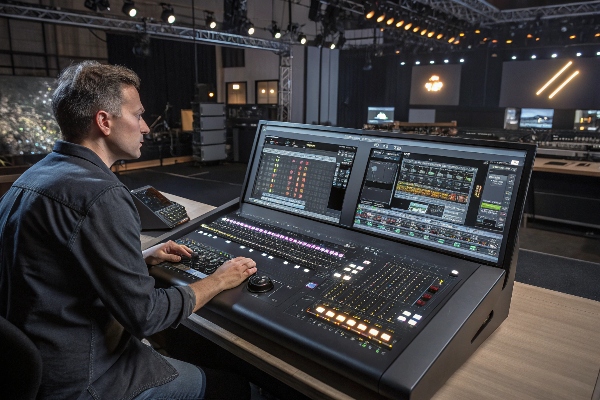
Lighting control is key, with DMX5126 as the standard protocol. It manages color, intensity, movement, and effects via a console. Fixtures have channels for parameters like dimmer, gobo, or pan/tilt. Cues preset these values for seamless transitions, avoiding manual toggling. Grouping fixtures and using submasters simplifies managing zones or fixture types. Timing is crucial—fades can be instant or gradual, synced to beats or dialogue. Modern consoles allow remote control via tablets, speeding up rehearsals. Always have backups like spare consoles and organized DMX addresses. Test updates pre-show to avoid crashes. Good control ensures smooth, polished lighting transitions.
Why Is Energy Efficiency Important?
High power bills drain budgets. Traditional lamps also generate more heat, which can stress the venue’s cooling system.
LED fixtures save energy and last longer. Tungsten lamps cost less initially, but they consume more power and burn out faster.
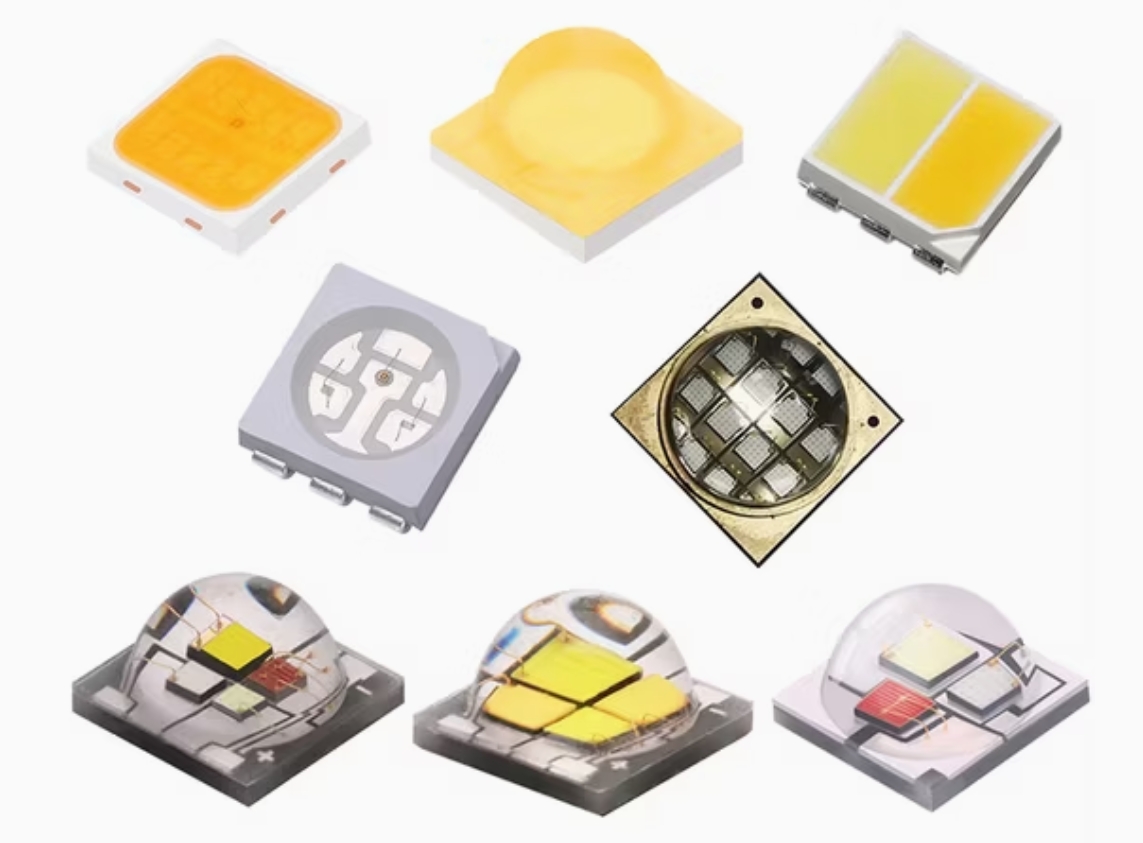
LED lights are energy-efficient, using less electricity and emitting less heat than traditional tungsten fixtures. They reduce running costs, simplify setups by changing colors without gels, and minimize air conditioning needs during long events. While tungsten lights offer a warm glow and lower upfront costs, they consume more power, heat up quickly, and require frequent maintenance. Modern LEDs now replicate tungsten's warmth with adjustable color temperatures and better color rendering. LEDs are safer, use fewer amps, and meet environmental guidelines, reducing carbon footprints. Their long-term cost savings and versatility make them the future of stage lighting.
How Do You Handle Safety and Compliance?
Fancy lighting is useless if the setup is unsafe. Accidents cause serious problems.
Pick certified fixtures. Secure rigging with rated hardware. Keep a reliable backup for power outages.

Safety is essential in stage lighting. Use fixtures with UL, ETL, or CE marks to meet standards and avoid undocumented brands. Rigging requires rated clamps, safety cables, and stable trusses to prevent falls. Inspect cables for damage and organize them to avoid trips or short circuits. Use cable ramps for walkways. Plan for emergencies with backup power7 or generators, testing systems beforehand. Follow fire codes, ensure ventilation for fog machines, and provide staff training on best practices and emergency shutdowns. Compliance protects everyone and ensures smooth shows, combining impressive performances with a secure environment. Safety must always come first.
How to Manage Budget and Plan Upgrades?
Money can be tight. You want high-quality gear, but you do not want to overspend.
Compare upfront costs to long-term usage. LED has higher start costs but lower running costs. Renting can save money for smaller events.

Budgeting balances upfront costs with long-term savings. Frequent events benefit from investing in reliable LED fixtures, saving energy and maintenance while reducing heat issues. For occasional events, renting offers access to the latest gear without large capital expenses. Some venues combine buying basics with renting special fixtures like moving heads. When buying, prioritize gear compatible with modern control systems8 and plan for upgrades. Expand gradually—start with LED PARs or Fresnels, then add moving heads later. Monitor repair and replacement cycles, budgeting for maintenance. Research advanced LED options to reduce power draw and fixture needs. Smart planning ensures cost-effective, adaptable lighting setups.
What Are Some Best Practices for Implementation?
Ideas on paper do not always match real life. You need careful setup and testing to make it all work.
Coordinate with the creative team. Do test runs. Have a backup plan. Refine cues until transitions look right.
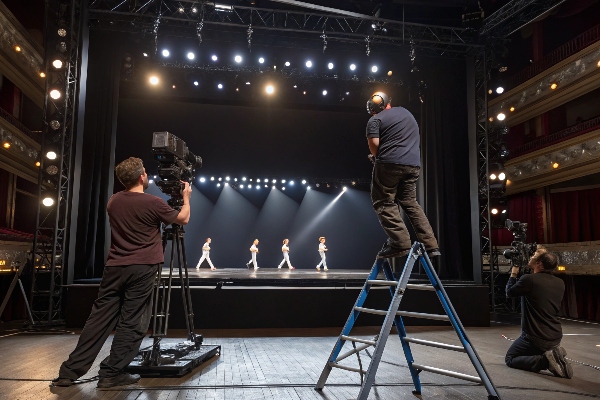
Successful implementation begins with strong pre-production. Meet with the director, choreographer, and sound engineer to align lighting cues with the show’s flow. During setup, place fixtures per the plot, confirm their aim, and verify DMX addresses. A dress rehearsal9 is essential for setting scenes, recording cues, and testing transitions. Performers adapt to lighting states, and adjustments are made to angles, colors, or effects like strobes. Backup plans, such as spare consoles and fixtures, ensure reliability. Post-show, gather feedback from performers, the director, and the audience to refine future designs. Each production builds skills and enhances your reputation for smooth, effective lighting.
Conclusion
Stage lighting is a key part of any show. Plan it well, and your event will shine with clarity, color, and impact.
-
This resource offers insights into the techniques and effects of stage lighting, crucial for creating impactful performances. ↩
-
Discovering the significance of soft and balanced light can improve the ambiance and professionalism of corporate events, ensuring comfort and clarity for presentations. ↩
-
Learning about the benefits of efficient LEDs can help you avoid power overloads, ensuring a safer and more reliable lighting setup for your event. ↩
-
Discover how wide washes can transform large areas with uniform color, enhancing ensemble scenes and creating impactful visual backdrops. ↩
-
Learn the art of using tight spots to highlight soloists or key objects, ensuring your audience's attention is exactly where you want it. ↩
-
Understanding DMX512 is crucial for anyone involved in lighting design, as it's the standard protocol for controlling lighting equipment, ensuring smooth and precise transitions. ↩
-
A reliable backup power system ensures uninterrupted performances during outages, maintaining safety and show continuity. ↩
-
Learning about modern control systems can guide you in selecting compatible gear, ensuring a future-proof and adaptable lighting setup for your events. ↩
-
This resource will explain the critical role of dress rehearsals in identifying and fixing potential issues before the actual performance. ↩


